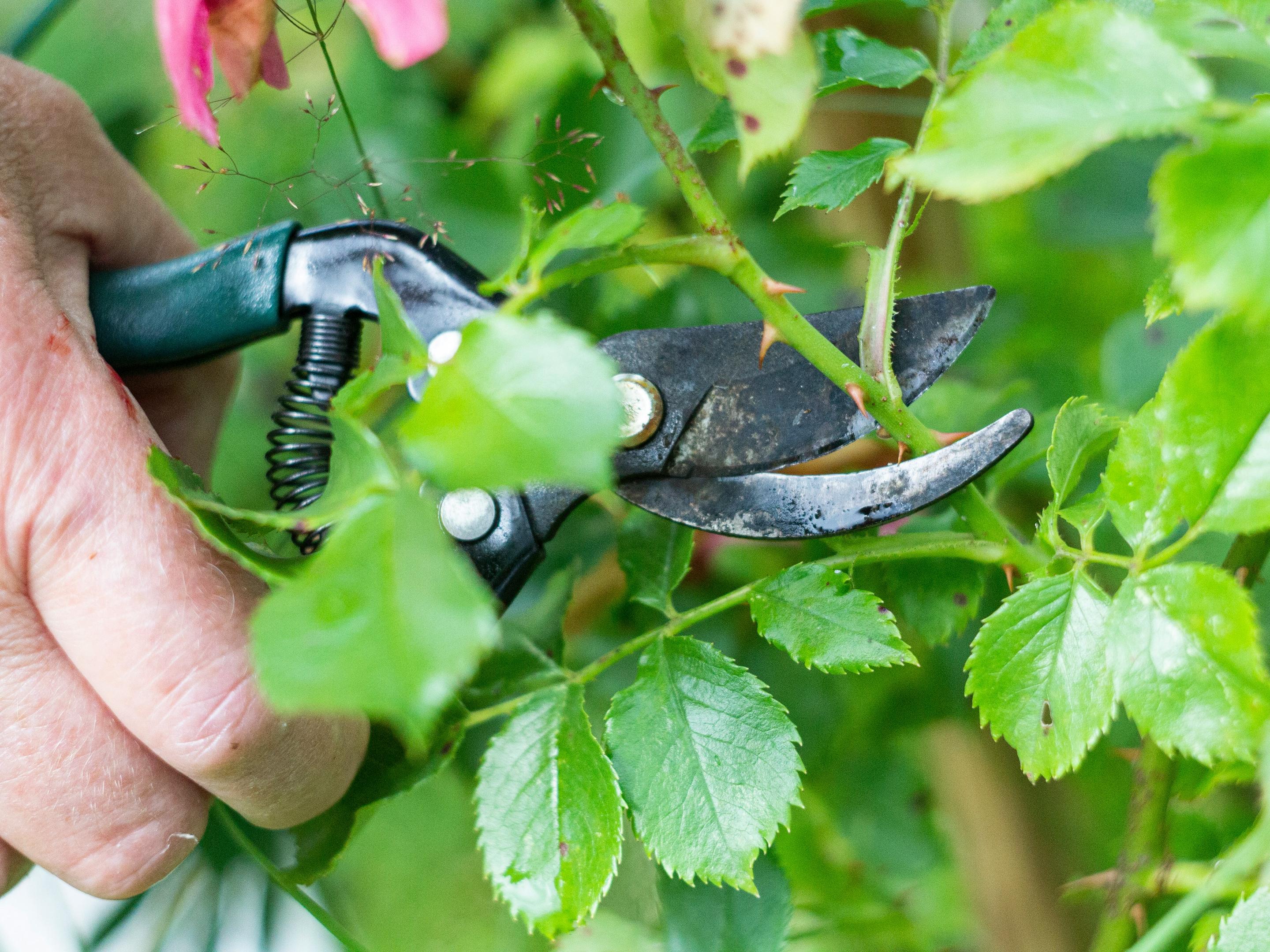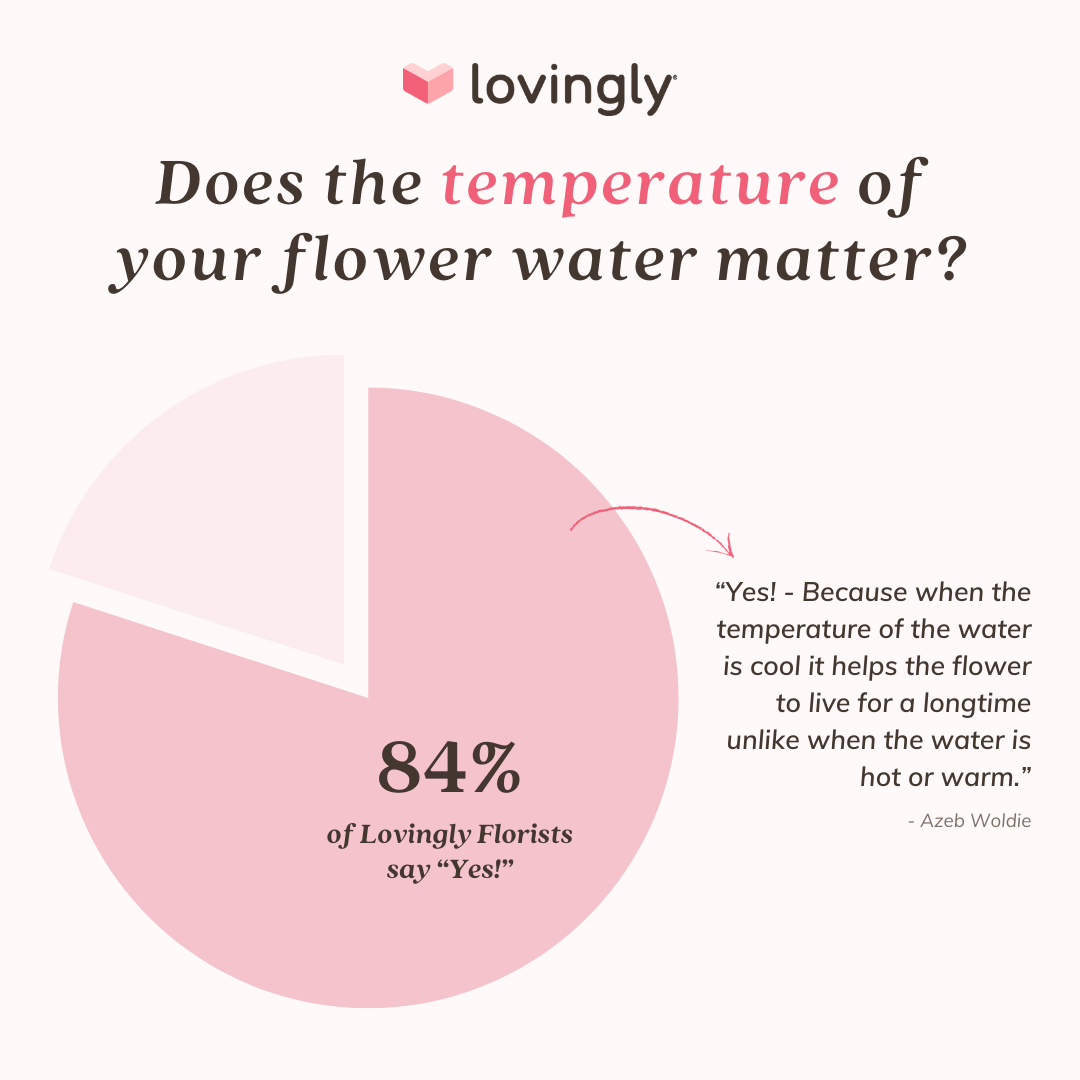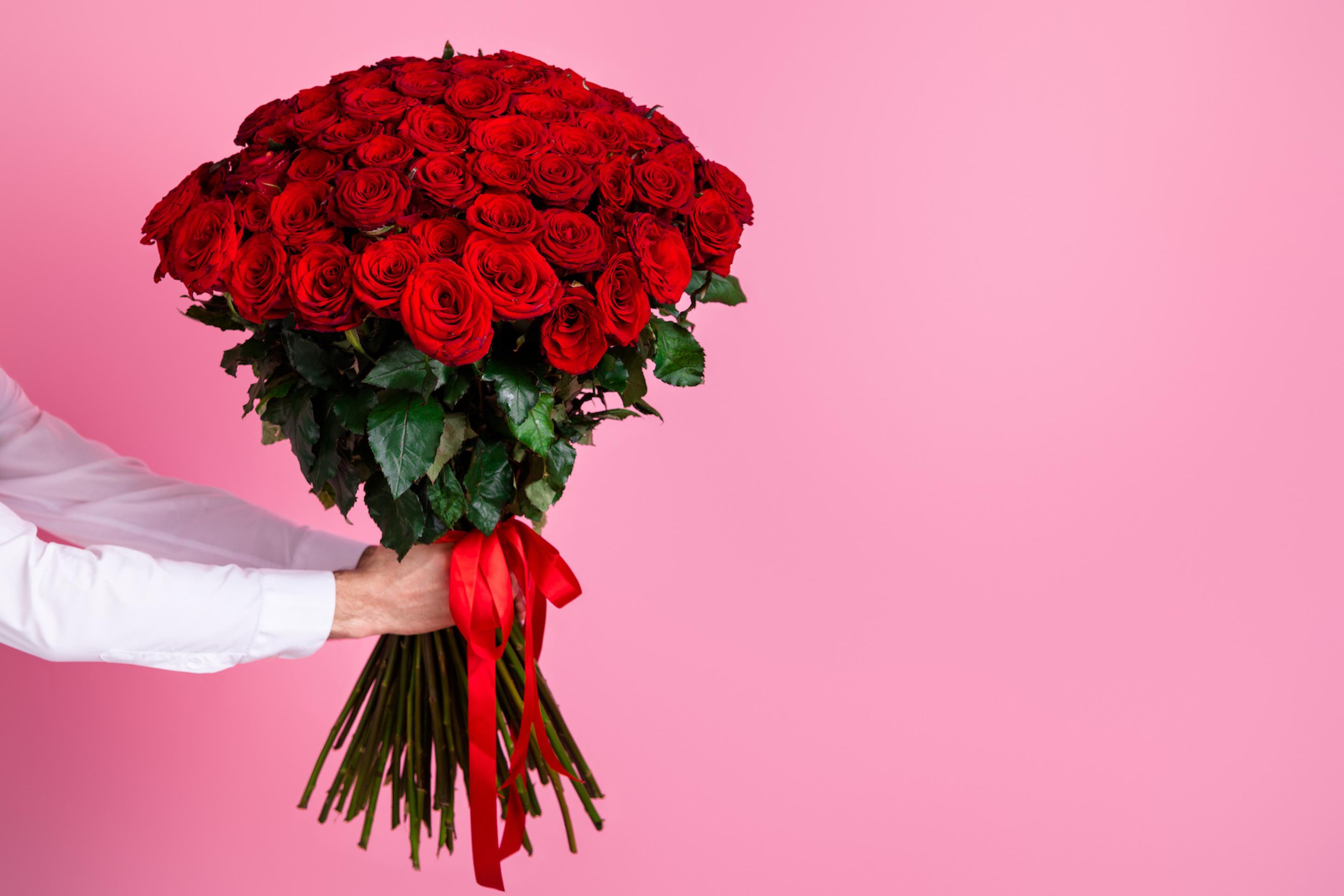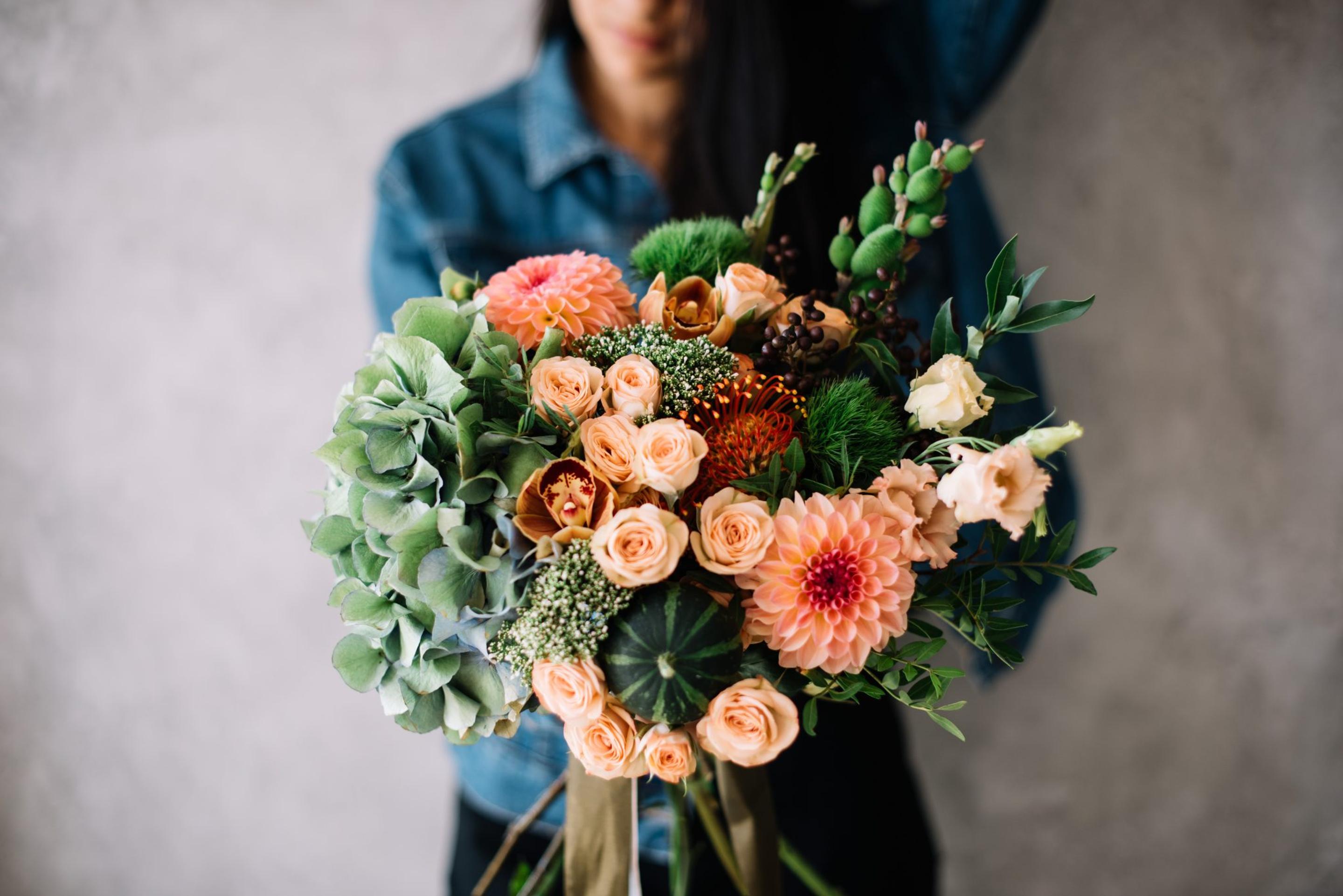
June 20, 2024
The Ultimate Guide to Flower Care: Tips and Tricks from Lovingly's Expert Florist Community
June 20, 2024
Flowers have a magical way of brightening up any space, but keeping them fresh and vibrant can sometimes be a challenge. We've gathered expert advice from our community of local florists to help you extend the life of your beautiful blooms.
Need the cliff notes? Our flower care essentials will keep you going.

Read on to discover the full essential guide, covering all the tips and tricks for flower care that will ensure your arrangements stay stunning for as long as possible!
A big thank you to all Lovingly Partners who contributed their expert advice!
Water, Water, Water
Water is essential for life, health, and vitality. Just as staying hydrated is crucial for our own well-being, providing fresh, clean water for your flowers is vital for their longevity. Water helps transport nutrients through the flower's stem, allowing it to stay fresh and vibrant.
Imagine going a day without drinking water — your energy levels drop, and you feel sluggish. Flowers experience a similar decline without adequate hydration. Changing the water regularly, keeping it at the right temperature, and ensuring the vase is clean are simple yet powerful practices to extend the life of your blooms.
Think of it as a wellness routine for your flowers! By paying attention to their hydration needs, you not only keep them looking beautiful but also support their health in the same way that drinking enough water supports yours.
Water Tips:
- Change the Water Regularly: Most florists recommend changing the water every day or every other day or whenever it starts to look discolored.
- Use Room Temperature Water: Avoid using hot or cold water. Room temperature is generally the safest bet for most flowers.
- Keep the Vase Clean: Regularly cleaning the vase helps prevent bacteria growth that can harm your flowers.
- Fill to the Right Level: Ensure the water level covers the stems but doesn't touch the leaves, as submerged leaves can rot and spoil the water.
Want more floral tips like this in your inbox?
Temperature Matters
Our expert florists have spoken — the temperature of the water you use for your flowers can make all the difference.
When it comes to keeping your flowers fresh and vibrant, the temperature of the water you use is crucial. Our expert florists emphasize that just like the perfect temperature of a cup of tea can enhance its flavor, the right water temperature can significantly impact the health and longevity of your floral arrangements.
Room Temperature: The majority of florists agree that room temperature water is ideal for most flowers. It strikes a perfect balance, ensuring that the flowers are not shocked by sudden temperature changes. Room temperature water helps flowers absorb nutrients efficiently, maintaining their vibrant appearance for a longer period.
Cold Water: For certain flowers, especially those that bloom in cooler seasons like tulips, cold water is the best choice. Cold water slows down the aging process and helps the flowers stay fresh longer. It’s like giving your flowers a refreshing, energizing drink that keeps them lively and beautiful.
Lukewarm Water: Lukewarm water has its place too, particularly when you need to encourage closed blooms to open. However, florists caution that while warm water can speed up blooming, it can also cause fully opened flowers to deteriorate more quickly. It's a delicate balance, much like ensuring your morning coffee is just the right temperature to start your day perfectly.
Here are some insights directly from Lovingly's own local florists:
- The hotter the water, the more the stems drink and can make the blooms wilt quicker.
- Cooler or room temp is best.
- Warm water opens closed blooms and deteriorates open blooms faster.
- Once blooms are open, cold water slows down bacteria and decay.
- Certain flowers cannot handle too hot or too cold. For mixed bouquets, tepid water (60-80F) is the safest bet.
Specific Recommendations by Flower Type
Roses, Daisies, Carnations: Room Temperature Water
Tulips, Lilacs, Lilies: Cold Water
Peonies, Irises: Lukewarm Water to Encourage Blooming
In essence, the temperature of the water you use for your flowers is as important as maintaining a comfortable environment for yourself. Just as you thrive in a comfy temp zone, so do your flowers. Paying attention to water temperature ensures your arrangements stay beautiful, adding joy and elegance to your space for as long as possible.
General Consensus on Temperature
If you are unsure, you can't go wrong following the rule of thumb in which room temperature is best. Here is Gigi Smith's take from Briar Patch Floral & Gift in Calabash, NC
Cooler or room temperature water is the best choice to keep your blooms fresh and vibrant. Hot water causes the stems to drink faster, which can lead to quicker wilting.
When we polled our community of experts, 84% of Lovingly florists agree that temperature does matter! So keeping it on the room temperature to slightly cooler temperature will be your best bet! Azeb Waldie from Azi Flowers in Arlington, VA gives a resounding yes!

Food For Thought
Don't let your flowers get hangry! While water is essential of course, adding the right nutrients can significantly extend the life of your floral arrangements. Flowers benefit immensely from a little extra care in the form of flower food.
But what is flower food?
Flower food is a specially formulated mixture designed to provide cut flowers with the essential nutrients they need to stay fresh, vibrant, and healthy for a longer period. It typically contains a blend of:
- Sugars: These provide an energy source for the flowers, helping them maintain their vitality and continue blooming.
- Acidifiers: These help to lower the pH level of the water, making it easier for the flowers to absorb nutrients and water through their stems.
- Biocides: These substances help to inhibit the growth of harmful bacteria and fungi in the water, which can clog the stems and shorten the lifespan of the flowers.
By using flower food, you essentially create an ideal environment for your flowers, mimicking the conditions they need to thrive as if they were still growing in nature.
What if I don't have a flower food packet?
While you may sometimes receive a flower food packet with your arrangement, this may not always be the case. No need to fear, there are some easy homemade solutions that can keep your flowers fed and happy.
- Sugar: A pinch of sugar in the water can help nourish the flowers.
- Aspirin: Crushed aspirin can help keep the water clean and extend the freshness of the blooms.
- Bleach: A few drops amount of bleach can prevent bacterial growth in the water.
- Lemon Juice and Sugar: A combination of lemon juice and sugar can mimic the effects of commercial flower food.
- Apple Cider Vinegar: Adding a bit of apple cider vinegar to the water can help keep the stems free from bacteria.
Rita Scanlon from Seithel's Florist in Charleston, SC is a big fan of the aspirin trick:
Here's a surprising little secret for keeping your blooms vibrant: add a crushed aspirin to the water! It's like giving your flowers a little health boost—helping them absorb nutrients better and stay perky and fresh longer.
How can I make sure my flowers eat?
Just like a lovingly grandma who not-so-subtly suggests that you should eat more food, it's important to ensure your flowers are ready to eat. Besides keeping flowers at the right temperature and having clean fresh water, you want to cut the stems.
Think of this as grandma cutting up your food into bite-sized pieces ready for you to eat!
Cutting the stems at a 45° angle, allows your flowers to absorb water more effectively.
Common Mistakes to Avoid
Taking care of flowers can sometimes be tricky, but our expert florists are here to help out. Sometimes even the best intentions can lead to common mistakes with floral care. Avoiding these pitfalls can make a significant difference in keeping your blooms fresh and vibrant. Here's some of the top pitfalls our local florists see and what to do about it!
Not Changing the Water Regularly
- Mistake: Leaving the same water in the vase for too long.
- Consequence: Stagnant water becomes a breeding ground for bacteria, which can clog the stems and shorten the lifespan of your flowers.
- Solution: Change the water every day or every other day to keep it fresh and clean.
Ignoring Water Quality
- Mistake: Using straight tap water without letting it sit to reduce chlorine.
- Consequence: Chlorine in the water can be harmful to flowers and inhibit their ability to absorb nutrients.
- Solution: Let tap water sit for a few hours before using it, or use filtered water.
Not Cutting Stems Properly
- Mistake: Failing to cut the stems at an angle or cutting them with dull scissors.
- Consequence: Straight cuts can block water uptake, and dull scissors can crush the stems.
- Solution: Use sharp scissors or a knife to cut the stems at a 45-degree angle.
Submerging Leaves in Water
- Mistake: Allowing leaves to sit in the water.
- Consequence: Submerged leaves can rot, leading to bacterial growth in the water.
- Solution: Remove any leaves that would be below the water line.
Placing Flowers in Direct Sunlight or Near Heat Sources
- Mistake: Putting your flowers in a sunny spot or near a heat source like a radiator.
- Consequence: Heat can cause flowers to wilt quickly and lose their freshness.
- Solution: Keep flowers in a cool, shaded area away from direct sunlight and heat sources.
Using Too Much or Too Little Flower Food
- Mistake: Incorrectly measuring flower food or skipping it altogether.
- Consequence: Too much food can be harmful, and too little won’t provide the necessary nutrients.
- Solution: Follow the instructions on the flower food packet for the correct dosage.
Touching Those Gorgeous Petals
- Mistake: Frequently touching or handling the petals.
- Consequence: Oils and dirt from your hands can damage the delicate petals, causing them to bruise, wilt, or deteriorate faster.
- Solution: Handle flowers by the stems whenever possible and avoid touching the petals. This will help maintain their appearance and longevity.
Erleene Connard from Erleen's Florist in Pomona, CA keeps it real with her advice on not touching those beautiful flowers:
It's tempting to touch those gorgeous petals, but every time you handle the flowers, you risk bruising them which can lead to quicker wilting. Admire their beauty from a distance and they’ll last longer!”
Special Care for Special Blooms
Everyone IS a unique flower!
Different types of flowers have unique care needs to ensure they stay fresh and beautiful. Here’s some expert advice tailored to various popular blooms:
Roses
Tip: Remove any leaves that will be below the water line to prevent rot. Cut the stems at a sharp angle under running water or submerged in water to prevent air from entering the stems, which can block water uptake.
Additional Care: Roses benefit from a flower food solution to maintain their vibrant color and freshness.
Discover the meaning behind the famous rose or shop rose bouquets.
Tulips
Tip: Use cold water to help tulips stay upright and fresh longer. Change the water frequently and keep the stems trimmed.
Additional Care: Tulips continue to grow even after being cut, so trim the stems every few days to maintain the desired arrangement height.
Dive into the world of tulips or shop beautiful tulips arrangements
Lilies
Tip: Remove the pollen from the stamens to prevent it from staining the petals and prolong the life of the flowers. Use room temperature water and keep the lilies in a cool place.
Additional Care: Trim the stems at an angle and change the water regularly to keep the lilies hydrated and fresh.
Explore the meanings of lilies or send a gorgeous lily flower arrangement today.
Orchids
Tip: Mist the orchids regularly to provide the humidity they need. Use room temperature water and avoid overwatering, which can lead to root rot.
Additional Care: Orchids prefer indirect sunlight, so place them in a bright but shaded spot.
Read more about elegant orchids and give someone (or yourself) the luxurious gift or orchids!
Peonies
Tip: Use lukewarm water to encourage the blooms to open. Trim the stems at an angle and change the water frequently.
Additional Care: Peonies are sensitive to ethylene gas, so keep them away from ripening fruits.
Hydrangeas
Tip: Submerge the entire flower head in water for 15-20 minutes to rehydrate the blooms. Use room temperature water and mist the flowers regularly.
Additional Care: Hydrangeas benefit from having their stems crushed slightly to help with water uptake.
Find out the secrets of hydrangeas and while you're at it, send a gorgeous hydrangea arrangement to a special someone.
Some good quotes to live by
We are eternally thankful for our amazing Lovingly Florists across the US and Canada who shared their expert advice. To wrap it up, here are some good quotes to live by when it comes to flower care tips & tricks:
Ensure your flower arrangement is always full of water, and place it in a cool location away from kitchens, heat sources, and sunny windows.
- Thomas Dibuono from Floral Fashions in Port Chester, NY
Many people don't pay attention to their flowers until they start wilting, which is often too late for recovery.
- Reonna Martinez from The Flower Patch Florist in Palm Desert, CA
Hydrangeas need extra love. Soak the entire flower in water for 15 minutes, give it a fresh cut, and place it in your vase if you bought stems. Do the same if they look soft or limp within the bouquet.
- Summer Anderson from Consider the Lilies in Casper, WY
And when all else fails, consult your local Lovingly florist!


